I’ve been stalking one of our second-grade teachers, Catherine, an Aussie who has lived in Laos for several years and shares my love of the local temples. She seems to know everyone in town, and she has some beautiful stories about her experiences here. So I tagged her to be my tour guide today – Laos National Day – on my visit to the Wat ‘o’ the Week. I rode my bike to Catherine’s house, which is next to Wat Si Muang (a temple you may recall from the fabulous That Luang Festival “wax castle procession”). From there, we crossed the street, rode down an alley and popped in to a side gate of Wat Phia Wat, a temple overlooking the Mekong River.
We immediately noticed the presence of many military men, including a few camped out on the steps of the temple’s “sim.”
After poking around the temple grounds a bit, we were greeted by On Aye, a friendly temple resident. He told us that he’s living at Wat Phia Wat while he completes his medical residency in family medicine at a nearby hospital. (Side note: Some of you know about my former career working for the American Academy of Family Physicians, so it was interesting to hear On Aye explain that family medicine is a relatively new specialty in Laos.)
On Aye gave us a primer on some of the temple’s features. We walked to a collection of gilded sculptures, and he explained that they depict Buddha’s life:
First, there’s Buddha’s mother.
Next, we see newborn Buddha taking his first seven steps and lotus flowers blooming in his footsteps.
Here, On Aye tells us about Buddha’s first meditation experience.
Here, Buddha is teaching.
And, finally, people pay their respects to Buddha after his death.
On Aye walked us to a banyan tree, surrounded by more Buddha sculptures. These were similar to the ones Tony and I saw last week at Wat Hai Sok. “You can see everywhere the temple usually have this tree,” On Aye said. Turns out the Buddha statues are “Days of the Week Buddhas.” Many people like to leave special offerings or make a donation to the Buddha that represents the day they were born.
The Monday Buddha says, “Stop, in the name of love!” in his peace-making pose, also known as (seriously, I’m not making this up) his “Pacifying the Relatives” pose.
The reclining Tuesday Buddha symbolizes the moment he entered Nirvana. I loved the little clumps of sticky rice left by worshippers on Buddha’s arm and hand. (If I only had a dollar for every time I woke up to find rice stuck on my arm … or in my hair …)
On Aye and I were both born on a Wednesday. The Wednesday Buddha takes two forms, both related to accepting gifts of food! No wonder I felt an immediate connection with my birthday Buddha. Wat Phia Wat’s Wednesday Buddha is holding an alms bowl under his lovely shawl.
The Thursday Buddha also speaks to me … ommm. He is sitting in a lotus position for meditation, seeking enlightenment.
Friday’s Buddha is standing at the Banyan tree, contemplating how he will explain the suffering in the world to his followers.
Saturday’s Buddha is again sitting in meditation, but this time the Naga King is protecting him.
Sunday’s enlightened Buddha stands still for seven days under the tree to contemplate his achievement of complete knowledge.
As we meandered back to our bikes, On Aye explained that the military was using the temple as a sort of base camp to provide extra protection and help keep the peace until after the Southeast Asian Games – a biennial multi-sport event involving participants from the 11 countries of Southeast Asia, which will take place in Vientiane Dec. 9-18.
When Catherine and I pedaled out the gate, On Aye had joined some of the soldiers for a game of bocce ball.
Just like last week, I am coming up empty-handed in my online search for information about this temple. Darn. So in the absence of information, here are more photos!

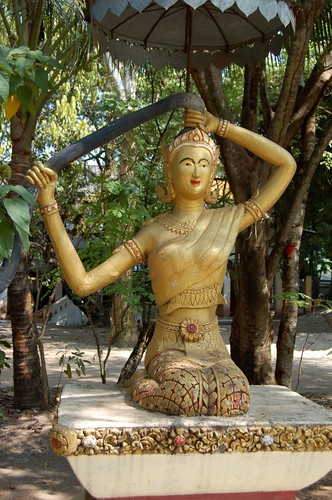
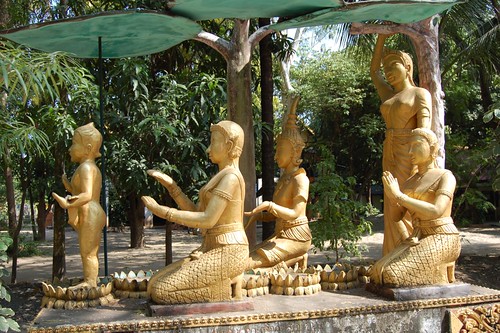

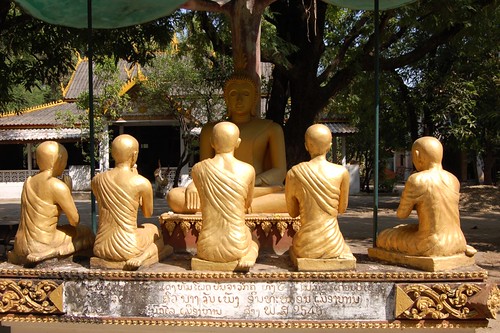
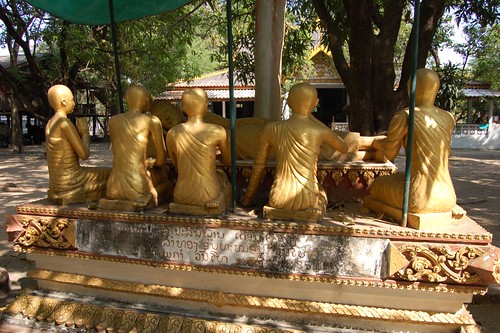
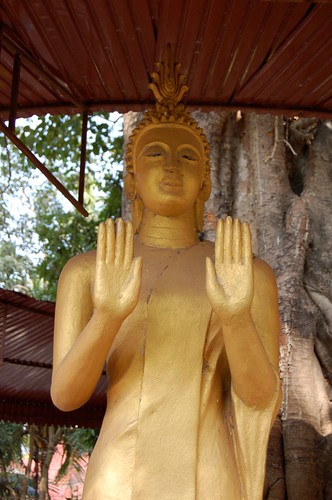

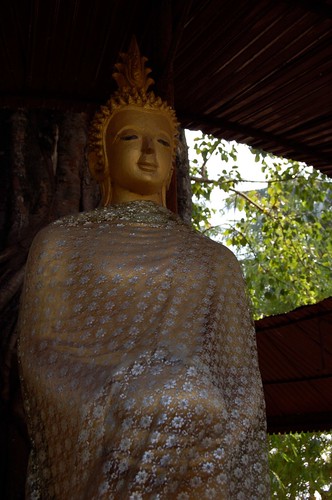
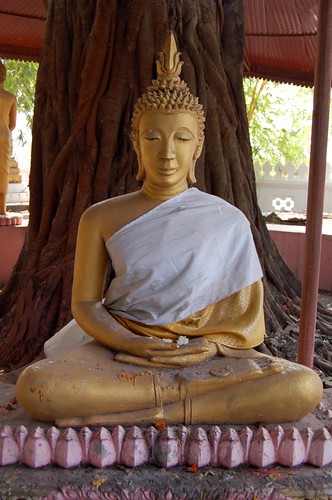
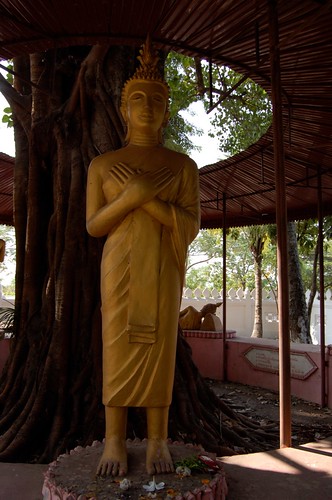
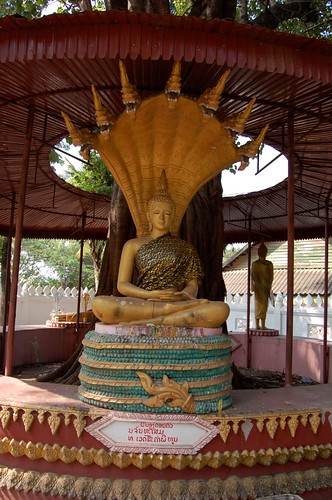
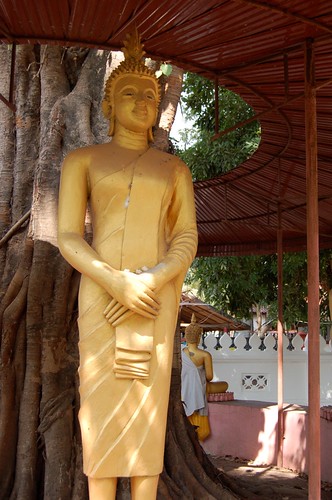
What a great wat! Makes us want to come back and visit you again!
Just one small correction – the statue you identify as the Buddha’s mother is in fact the Earth Goddess – Phra Mae Thoranee in Thai.
You can read more about her here http://en.wikipedia.org/wiki/Phra_Mae_Thorani
The Buddha’s mother, Queen Maha Maya, is normally only ever depicted in temple murals depicting the story of the Buddha’s birth. I don’t recall ever seeing a statue of her, though there must be some around.
Great pics.